Universal Radio Frequency Fingerprinting across Receiving Systems Using Receiving Domain Separation
-
摘要: 受辐射源硬件失真和接收机硬件失真的耦合作用,实际接收信号中带有当前辐射源系统和接收系统共同的“个体信息”,导致辐射源指纹识别技术(RFF)在跨接收系统场景下无法通用。为消除接收机染色效应,该文将接收机影响作为单独作用域,提出一种基于接收域分离的跨接收系统通用性辐射源指纹识别方法。该方法通过双标签多通道特征联合和域分离对抗重构方式实现信号中辐射源指纹作用域与接收机染色作用域分离,利用多部接收机数据预先训练网络对两种作用域的分离能力,聚焦辐射源指纹信息提取,从而提升辐射源指纹识别技术在跨平台跨接收系统、更新接收设备等场景下的适应能力。相比于直接特征提取和多接收机打包训练方式,所提方法能够真正适应实际无监督场景,且参与训练的源域接收机数目越多,域适应效果越好,不需要重复训练即可直接推广应用于新接收系统,具有较高的实际应用价值。Abstract: Due to the coupling effect of emitter distortion and receiver distortion, the actual received signal contains the information of the current emitter system and the receiving system, which makes the Radio Frequency Fingerprinting (RFF) technology unable to be generalized in cross-receiving system scenarios. In order to eliminate the effect of receiver, in this paper, a universal RFF method across receiving systems based on receiving domain separation is proposed which considers the influence of the receiver as a separate scope. Through the dual-label multi-channel fusion feature and domain separation adversarial reconstruction method, after trained with multi-receiver data in the source domain, the proposed method can separate domains of transmitting and receiving, extract emitter fingerprint information, which improves the generalization of RFF in scenarios such as cross-receiving system and cross-platform. Compared with the existing cross-receiver RFF methods, the proposed method can truly adapt to the actual unsupervised scenario. And the more the number of source domain receivers participating in the training, the better the domain adaptation effect. It can be directly applied to the new receiving system without repeated training, which has high practical application value.
-
表 1 辐射源失真参数设置
标签 滤波器失真 I/Q不平衡 功率放大器 杂散单音与载频泄露 $({a_0},{a_1},{\alpha _1})$ $({b_0},{b_1},{\beta _1})$ $G$ $\tau $ $({a_1},{a_2},{a_3})$ ${a_{{\text{ST}}}}$ ${f_{{\text{ST}}}}$ $\xi ({10^{ - 3}})$ E1 (1, 0.030, 0.25) (1, 0.030 2, 0.25) 0.999 8 –0.018 (1, 0.50, 0.30) 0.008 2 0.012 9 1.3+8.2j E2 (1, 0.060, 0.25) (1, 0.029 5, 0.25) 1.005 6 0.0175 (1, 0.08, 0.60) 0.007 5 0.013 2 1.5+7.2j E3 (1, 0.085, 0.25) (1, 0.029 0, 0.25) 1.010 2 0.012 (1, 0.01, 0.01) 0.007 0 0.012 3 1.1+6.8j E4 (1, 0.073, 0.25) (1, 0.031 0, 0.25) 0.999 2 0.003 (1, 0.01, 0.40) 0.008 7 0.013 5 1.7+9.0j E5 (1, 0.040, 0.25) (1, 0.031 3, 0.25) 0.998 2 0.024 (1, 0.60, 0.08) 0.00 90 0.011 9 2.0+6.5j 表 2 接收机失真参数设置
标签 随机性失真 确定性失真 相位噪声 采样抖动 量化噪声 滤波器失真 低噪声放大器失真 ($\sigma _\theta ^2$,${\varOmega _0}$) $v$ $\beta $ $({a_0},{a_1},{T_{\text{a}}})$ $({b_0},{b_1},{T_{\text{b}}})$ $({c_1},{c_2},{c_3})$ R1 (1,0.001) 0.020 1 (1,0.010,4) (1,0.031 5,4) (1,0.10,0.01) R2 (1,0.010) 0.023 2 (1,0.015,4) (1,0.030 5,4) (1,0.15,0.02) R3 (1,0.020) 0.030 3 (1,0.020,4) (1,0.029 5,4) (1,0.20,0.03) R4 (1,0.021) 0.040 4 (1,0.025,4) (1,0.028 5,4) (1,0.25,0.04) R5 (1,0.022) 0.045 5 (1,0.030,4) (1,0.027 5,4) (1,0.30,0.05) R6 (1,0.023) 0.050 6 (1,0.035,4) (1,0.026 5,4) (1,0.35,0.06) R7 (1,0.024) 0.060 7 (1,0.040,4) (1,0.025 5,4) (1,0.40,0.07) R8 (1,0.025) 0.070 3 (1,0.045,4) (1,0.024 5,4) (1,0.45,0.08) R9 (1,0.026) 0.073 3 (1,0.050,4) (1,0.023 5,4) (1,0.50,0.09) R10 (1,0.027) 0.080 3 (1,0.055,4) (1,0.022 5,4) (1,0.55,0.10) 表 3 单接收机直接训练方法的正确识别率(%)
R1 R2 R3 R4 R5 R6 R7 R8 R9 R10 正确识别率 100.00 100.00 99.50 100.00 99.50 98.00 98.50 98.50 100.00 97.50 表 4 单接收机直接训练方法的跨域适应能力统计(%)
目标域 R1 R2 R3 R4 R5 R6 R7 R8 R9 R10 均值 平均识别率 43.00 49.50 54.50 55.94 56.67 55.50 51.44 48.83 46.28 39.00 50.07 源域 R1 R2 R3 R4 R5 R6 R7 R8 R9 R10 均值 平均识别率 40.39 45.67 48.11 54.11 57.11 53.11 60.22 50.50 52.44 39.00 50.07 表 5 多接收机打包统一训练方法的正确识别率(含跨域适应)(%)
R1 R2 R3 R4 R5 R6 R7 R8 R9 R10 均值 R1 100.00 98.50 62.00 51.00 38.00 21.00 20.00 20.00 20.00 20.00 38.94 R12 100.00 100.00 99.50 89.50 66.50 47.00 29.00 21.00 20.00 20.00 49.06 R123 100.00 100.00 100.00 100.00 100.00 84.00 64.00 40.00 22.50 20.00 61.50 R1234 100.00 100.00 100.00 100.00 100.00 99.50 92.50 74.00 44.50 23.00 72.25 R12345 100.00 100.00 100.00 100.00 100.00 100.00 100.00 93.50 77.00 44.50 83.00 均值 100.00 99.70 92.30 88.10 80.90 70.30 61.10 49.70 36.80 25.50 - 表 6 接收域分离方法的正确识别率(%)
R1 R2 R3 R4 R5 R6 R7 R8 R9 R10 均值 R1 100.00 99.48 89.58 44.79 55.21 44.27 37.50 30.73 38.54 20.83 51.22 R12 99.48 99.48 95.31 89.06 68.75 71.88 53.13 56.25 36.98 41.15 64.06 R123 100.00 99.48 99.48 100.00 93.23 96.88 91.15 85.94 79.17 48.96 85.05 R1234 100.00 100.00 96.35 100.00 100.00 99.48 97.92 93.75 90.10 73.44 92.45 R12345 100.00 100.00 100.00 100.00 100.00 100.00 100.00 100.00 100.00 100.00 100.00 均值 99.90 99.69 96.14 86.77 83.44 82.50 75.94 73.33 68.96 56.88 - 表 7 多接收域分离方法消融实验的正确识别率(%)
损失函数 网络组成 识别率 损失函数 网络组成 识别率 ${\mathcal{L}_{{\text{2 }}}} + {\mathcal{L}_{{\text{3 }}}}$ RF1+RF2+EF+RC 91.67 ${\mathcal{L}_{{\text{1 }}}} + {\mathcal{L}_{{\text{2 }}}}$ RF1+RF2+EF 98.44 ${\mathcal{L}_{{\text{2 }}}} + {\mathcal{L}_{{\text{4 }}}}$ RF1+RF2+EF+DE 99.48 ${\mathcal{L}_{{\text{2 }}}} + {\mathcal{L}_{{\text{3 }}}}$ RF1+EF+RC+DE 95.31 ${\mathcal{L}_{{\text{1 }}}} + {\mathcal{L}_{{\text{2 }}}}$ RF1+RF2+EF+DE 98.50 ${\mathcal{L}_{{\text{2 }}}}$ EF 44.50 无GRL RF1+RF2+EF+RC+DE 94.27 等权重 RF1+RF2+EF+RC+DE 93.23 -
[1] XU Zhengwei, HAN Guangjie, LI Liu, et al. A lightweight specific emitter identification model for IIoT devices based on adaptive broad learning[J]. IEEE Transactions on Industrial Informatics, 2023, 19(5): 7066–7075. doi: 10.1109/TII.2022.3206309. [2] ZHA Haoran, WANG Hanhong, FENG Zhongming, et al. LT-SEI: Long-tailed specific emitter identification based on decoupled representation learning in low-resource scenarios[J]. IEEE Transactions on Intelligent Transportation Systems, 2024, 52(1): 929–943. doi: 10.1109/TITS.2023.3308716. [3] 韦建宇, 俞璐. 通信辐射源个体识别中的特征提取方法综述[J]. 通信技术, 2022, 55(6): 681–687. doi: 10.3969/j.issn.1002-0802.2022.06.001.WEI Jianyu and YU Lu. Overview of radio frequency fingerprint extraction in communication specific emitter identification[J]. Communications Technology, 2022, 55(6): 681–687. doi: 10.3969/j.issn.1002-0802.2022.06.001. [4] HE Boxiang and WANG Fanggang. Specific emitter identification via sparse Bayesian learning versus model-agnostic meta-learning[J]. IEEE Transactions on Information Forensics and Security, 2023, 18: 3677–3691. doi: 10.1109/TIFS.2023.3287073. [5] REHMAN S U, SOWERBY K W, and COGHILL C. Analysis of impersonation attacks on systems using RF fingerprinting and low-end receivers[J]. Journal of Computer and System Sciences, 2014, 80(3): 591–601. doi: 10.1016/j.jcss.2013.06.013. [6] RAMSEY B W, STUBBS T D, MULLINS B E, et al. Wireless infrastructure protection using low-cost radio frequency fingerprinting receivers[J]. International Journal of Critical Infrastructure Protection, 2015, 8: 27–39. doi: 10.1016/j.ijcip.2014.11.002. [7] 乐波, 王桂良, 黄渊凌, 等. 接收机畸变对辐射源指纹识别的影响[J]. 电讯技术, 2020, 60(3): 273–278. doi: 10.3969/j.issn.1001-893x.2020.03.005.LE Bo, WANG Guiliang, HUANG Yuanling, et al. Influence of receiver distortion characteristics on specific emitter identification[J]. Telecommunication Engineering, 2020, 60(3): 273–278. doi: 10.3969/j.issn.1001-893x.2020.03.005. [8] ZHENG Yenan, YING Wenwei, HONG Shaohua, et al. A method for cross-receiver specific emitter identification based on CBAM-CNN-BDA[C]. 2022 IEEE 4th International Conference on Civil Aviation Safety and Information Technology (ICCASIT), Dali, China, 2022: 1320–1324. doi: 10.1109/ICCASIT55263.2022.9987240. [9] FANG Yuyuan, WEI Song, ZHAO Yang, et al. Radar-specific emitter identification with only envelope power based on multidimensional complex noncentral chi-square classifier[J]. IEEE Sensors Journal, 2023, 23(17): 20223–20235. doi: 10.1109/JSEN.2023.3298352. [10] TAN Kaiwen, YAN Wenjun, ZHANG Limin, et al. Semi-supervised specific emitter identification based on bispectrum feature extraction CGAN in multiple communication scenarios[J]. IEEE Transactions on Aerospace and Electronic Systems, 2023, 59(1): 292–310. doi: 10.1109/TAES.2022.3184619. [11] ZHU Chenyu, LIU Liang, and PENG Xiaoyan. Specific emitter identification based on temporal convolutional network sequence processing[J]. IEEE Communications Letters, 2023, 27(10): 2667–2671. doi: 10.1109/LCOMM.2023.3312390. [12] WU Zitao, WANG Fanggang, and HE Boxiang. Specific emitter identification via contrastive learning[J]. IEEE Communications Letters, 2023, 27(4): 1160–1164. doi: 10.1109/LCOMM.2023.3247900. [13] BALDINI G, GIULIANI R, GENTILE C, et al. Measures to address the lack of portability of the RF fingerprints for radiometric identification[C]. 9th IFIP International Conference on New Technologies, Mobility and Security, Paris, France, 2018: 1–5. doi: 10.1109/NTMS.2018.8328703. [14] SHI Mengkai, HUANG Yuanling, and WANG Guiliang. Carrier leakage estimation method for cross-receiver specific emitter identification[J]. IEEE Access, 2021, 9: 26301–26312. doi: 10.1109/ACCESS.2021.3058167. [15] HE Boxiang and WANG Fanggang. Cooperative specific emitter identification via multiple distorted receivers[J]. IEEE Transactions on Information Forensics and Security, 2020, 15: 3791–3806. doi: 10.1109/TIFS.2020.30017210. [16] FAWAZ H I, DEL GROSSO G, KERDONCUFF T, et al. Deep unsupervised domain adaptation for time series classification: A benchmark[EB/OL]. https://arXiv.org/abs/2312.09857v2, 2023. [17] LI Ya, GONG Mingming, TIAN Xinmei, et al. Domain generalization via conditional invariant representations[C]. The 32nd AAAI Conference on Artificial Intelligence, New Orleans, USA, 2018: 3579–3587. doi: 10.1609/aaai.v32i1.11682. [18] MATSUURA T and HARADA T. Domain generalization using a mixture of multiple latent domains[C]. The 34th AAAI Conference on Artificial Intelligence, New York, USA, 2020: 11749–11756. doi: 10.1609/aaai.v34i07.6846. [19] GANIN Y, USTINOVA E, AJAKAN H, et al. Domain-adversarial training of neural networks[J]. The Journal of Machine Learning Research, 2016, 17(1): 2096–2030. [20] BOUSMALIS K, TRIGEORGIS G, SILBERMAN N, et al. Domain separation networks[C]. The 30th International Conference on Neural Information Processing Systems, Barcelona, Spain, 2016: 343–351. [21] SUN Liting, WANG Xiang, HUANG Zhitao, et al. Radio-frequency fingerprint extraction based on feature inhomogeneity[J]. IEEE Internet of Things Journal, 2022, 9(18): 17292–17308. doi: 10.1109/JIOT.2022.3154595. [22] SRIDHARAN G. Phase noise in multi-carrier systems[D]. [Master dissertation], University of Toronto, 2010. [23] HUANG Yuanling and ZHENG Hui. Theoretical performance analysis of radio frequency fingerprinting under receiver distortions[J]. Wireless Communications and Mobile Computing, 2015, 15(5): 823–833. doi: 10.1002/wcm.2386. [24] 陈翔, 汪连栋, 许雄, 等. 基于Raw I/Q和深度学习的射频指纹识别方法综述[J]. 雷达学报, 2023, 12(1): 214–234. doi: 10.12000/JR22140.CHEN Xiang, WANG Liandong, XU Xiong, et al. A review of radio frequency fingerprinting methods based on Raw I/Q and deep learning[J]. Journal of Radars, 2023, 12(1): 214–234. doi: 10.12000/JR22140. [25] 郭瑞鹏. 基于深度学习的雷达辐射源个体识别技术研究[D]. [硕士论文], 西安电子科技大学, 2022. doi: 10.27389/d.cnki.gxadu.2022.002199.GUO Ruipeng. Research on individual identification technology of radar emitter based on deep learning[D]. [Master dissertation], Xidian University, 2022. doi: 10.27389/d.cnki.gxadu.2022.002199. [26] DING Lida, WANG Shilian, WANG Fanggang, et al. Specific emitter identification via convolutional neural networks[J]. IEEE Communications Letters, 2018, 22(12): 2591–2594. doi: 10.1109/LCOMM.2018.2871465. [27] AL-SHAWABKA A, RESTUCCIA F, D’ORO S, et al. Exposing the fingerprint: Dissecting the impact of the wireless channel on radio fingerprinting[C]. IEEE Conference on Computer Communications, Toronto, Canada, 2020: 646–655. doi: 10.1109/INFOCOM41043.2020.9155259. -






 下载:
下载:
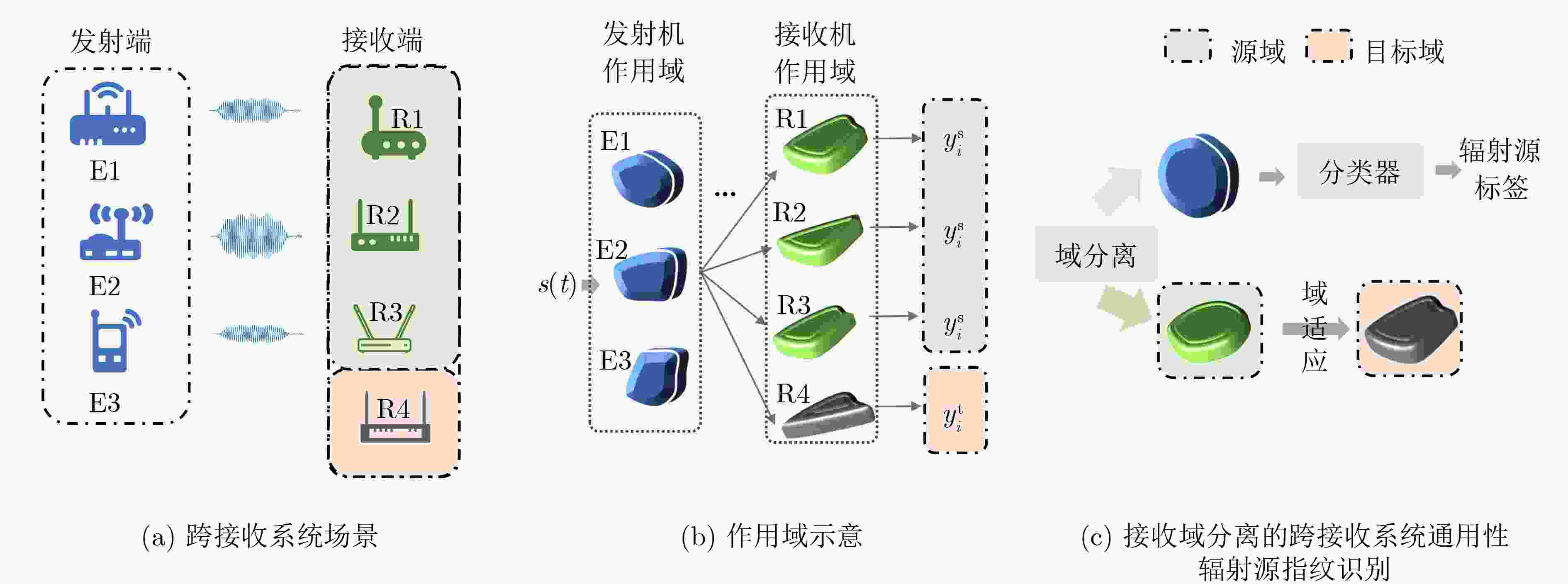
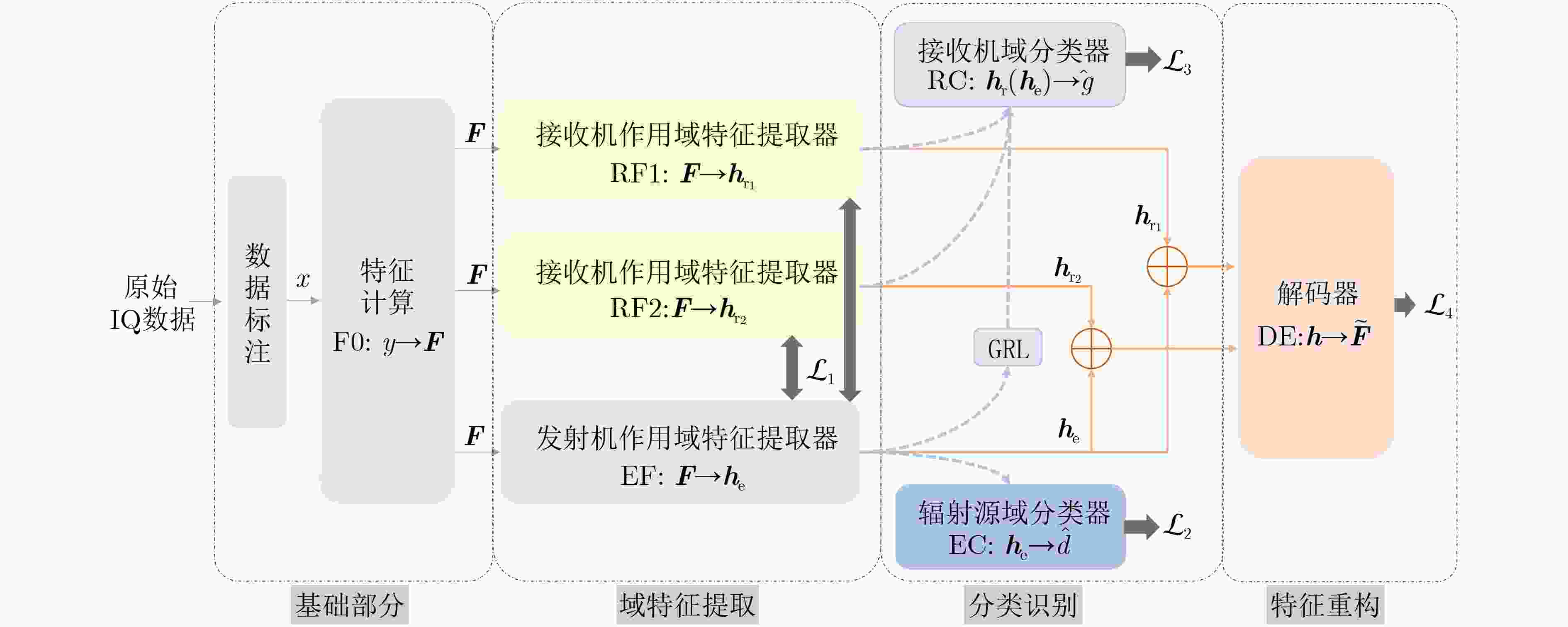


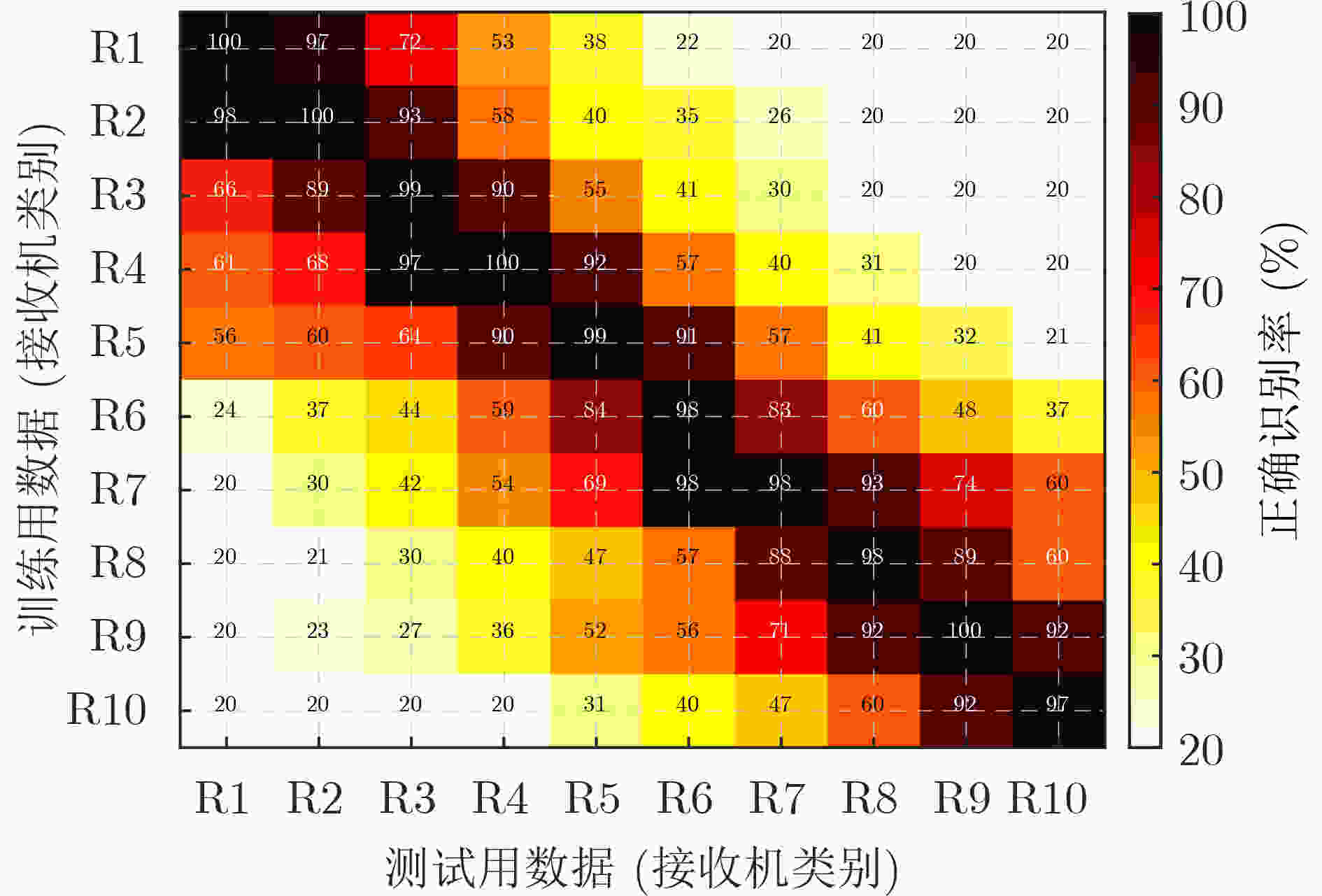
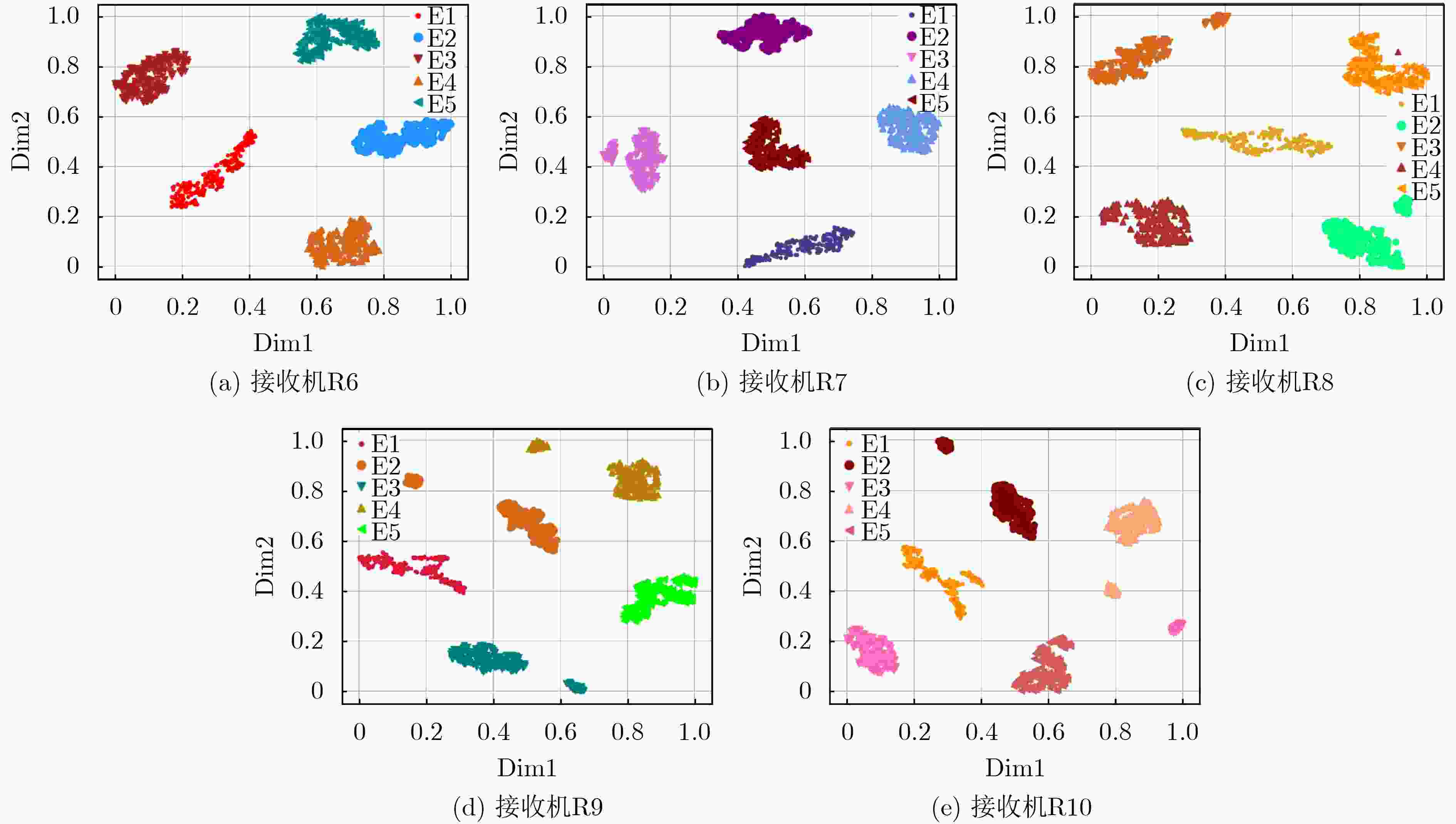
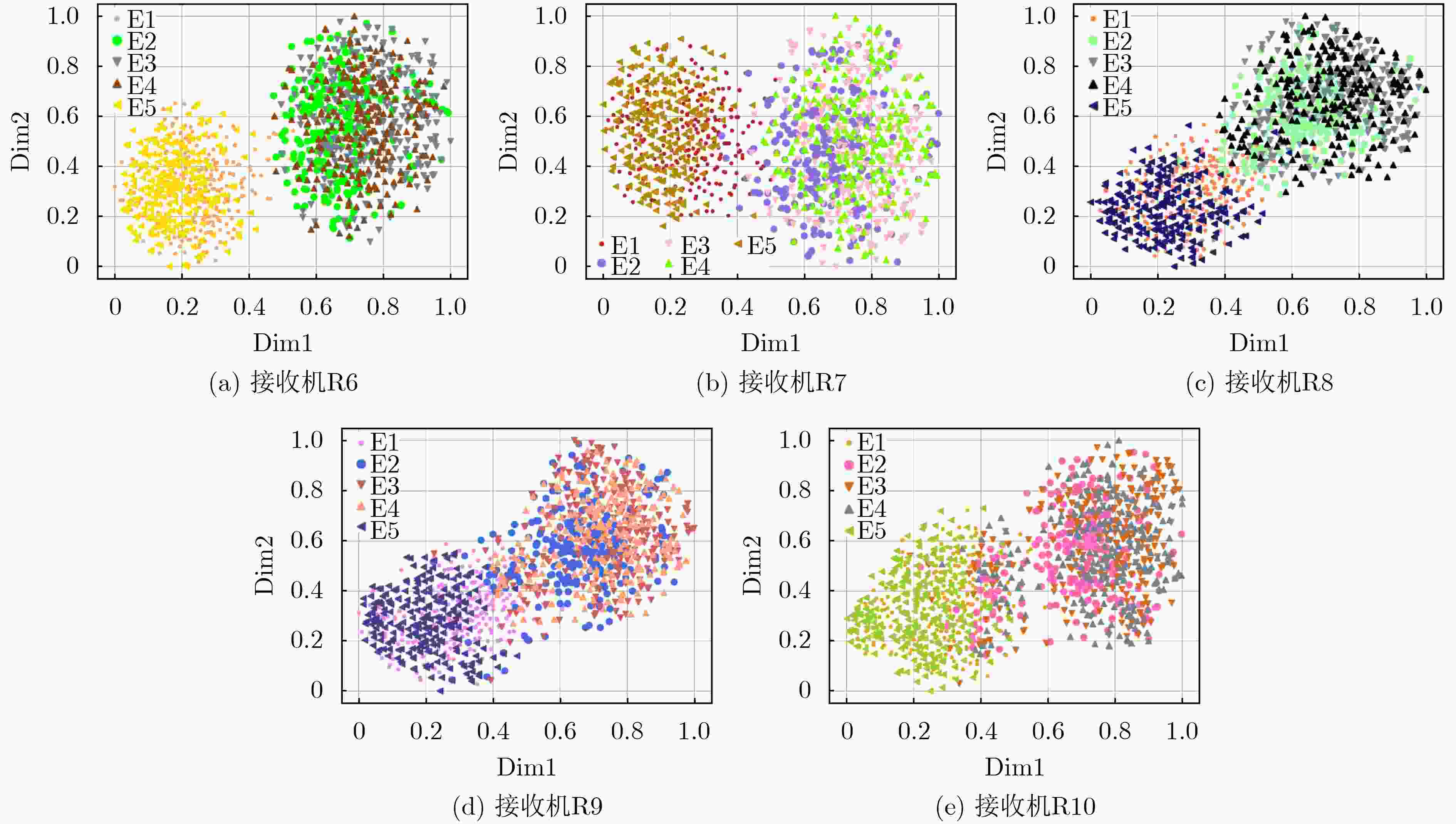
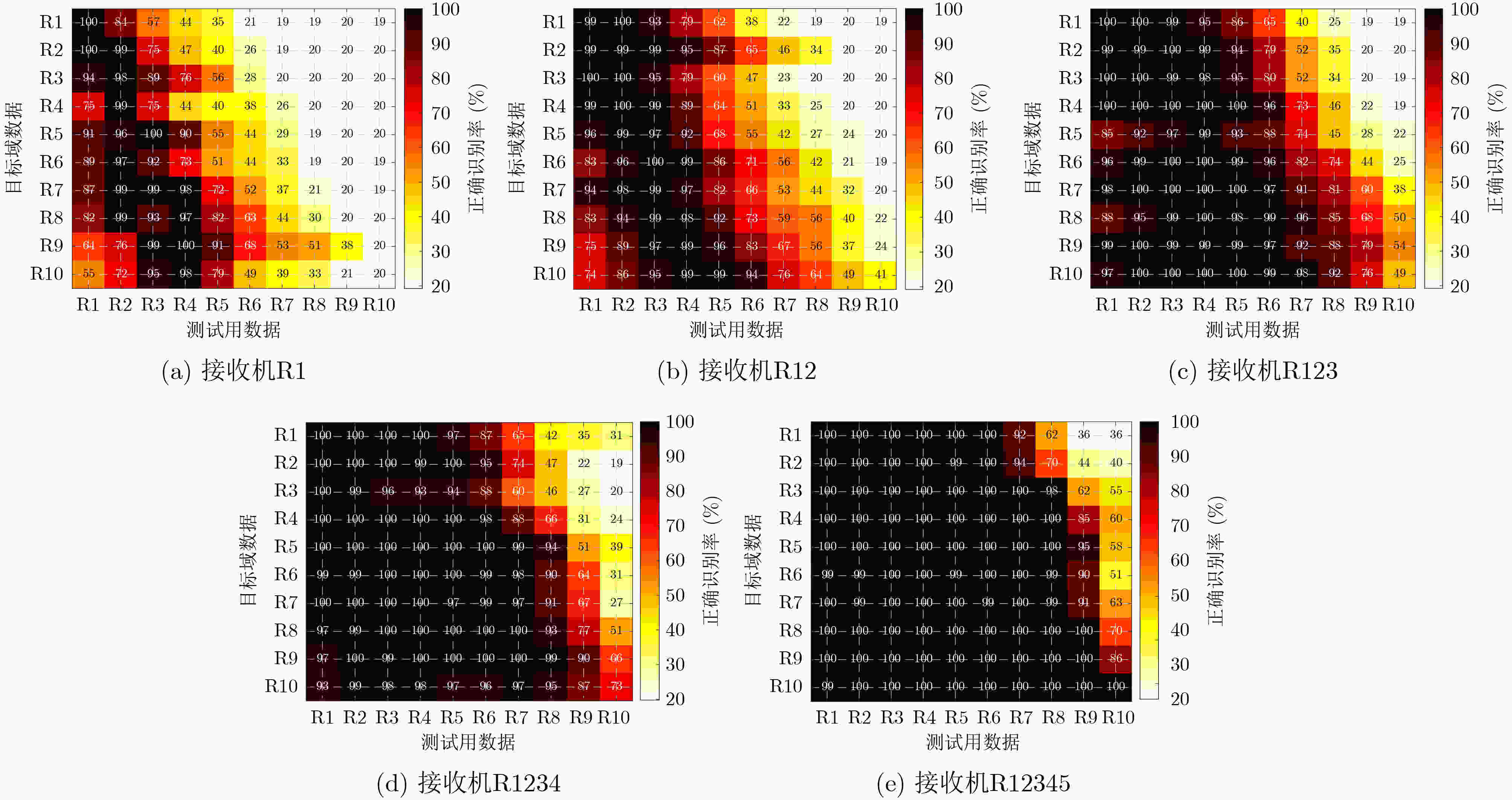


 下载:
下载:
